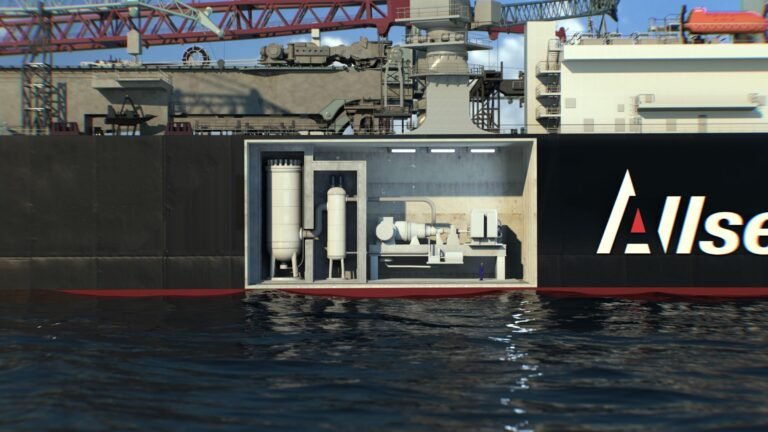Revolutionizing Offshore Operations: Allseas Ventures into Nuclear Technology
Offshore pipeline installation, heavy lift, and subsea construction contractor Allseas has unveiled an ambitious five-year plan to lead the way in nuclear technology adoption, aiming to optimize operations for energy-intensive offshore vessels and industrial clusters. Embracing nuclear power as “the next frontier”, the company acknowledges the limitations of alternative fuels like hydrogen, methanol, and ammonia in terms of availability, scalability, and cost.
Setting out on this five-year roadmap, Allseas aims to develop an advanced nuclear power system, specifically a small modular reactor (SMR), customized for integration into offshore vessels and onshore industrial clusters. This innovation promises to deliver stable, high-density, zero-emissions energy in remote and challenging environments.
The high-temperature gas-cooled reactors (HTGRs), utilizing fourth-generation reactor technology, will be in the 25 MWe range and powered by TRISO fuel particles. Each particle, approximately the size of a poppy seed, contains a uranium oxide core coated with multiple advanced protective ceramic layers to securely contain fission products even under extreme conditions.
This technology ensures passive safety as the reactor self-regulates and remains stable, maintaining temperatures well below critical thresholds. In case of malfunction, the system automatically cools down and shuts off without requiring active intervention or external cooling, as indicated by the company.
To address responsible waste management, circular approaches such as the reuse of graphite and reprocessing of spent TRISO fuel are being explored to further minimize environmental impact.
The plan entails finalizing initial design studies for offshore and onshore applications in the first year, followed by prototype development and pre-licensing discussions in collaboration with key stakeholders. These stakeholders include regulators like the Dutch Authority for Nuclear Safety and Radiation Protection (ANVS), International Maritime Organization (IMO), International Atomic Energy Agency (IAEA), as well as safety and classification bodies such as Lloyd’s Register. Allseas will also work closely with research and innovation partners like TNO, NRG PALLAS, TU Delft, and the Royal Association of Netherlands Shipowners (KVNR).
“As a family-owned company, continuity and preservation for future generations are central to how we work. We’ve built our reputation on turning bold ideas into ground-breaking solutions to meet the offshore industry’s evolving needs. That spirit of innovation, grounded in responsibility and reliability, drives everything we do,” stated Stephanie Heerema, Project Manager Nuclear Developments at Allseas.
“Our goal is to commence production at a dedicated facility by 2030. Initial deployment is likely to begin on land while offshore regulations are finalized, followed by implementation on our vessels and broader industry adoption. This aligns with our sustainability targets of achieving a 30% emissions reduction by 2030 and operating with net-zero emissions by 2050.”
The Thinking Behind the Move
According to Allseas, nuclear energy offers unparalleled energy density for prolonged, high-demand operations, providing stable and carbon-free power in all weather conditions. It also alleviates pressure on congested electricity grids and presents a feasible pathway to achieving net-zero emissions for maritime and heavy industry.
Termed as the “next bold step”, the decision to venture into nuclear technology stems from the current limitations faced by alternative fuels like hydrogen, methanol, and ammonia, especially in remote, energy-intensive operations. Allseas envisions that this technology could assist industrial clusters in reducing their dependence on fossil fuels, addressing grid congestion, and securing a resilient, carbon-free electricity and heat supply.
“Pioneering this technology offers the Netherlands – as a seafaring nation – the opportunity to develop an innovative global export product and become a leader in net zero shipping,” remarked Annet Koster, Managing Director of KVNR. “It also contributes to Europe’s broader goals of enhancing energy security, boosting industrial competitiveness, and building strategic autonomy.”
On a recent note, Allseas announced the procurement of two newbuild offshore construction vessels (OCVs) with methanol-ready propulsion design last month. The first vessel is scheduled for delivery in September 2026, followed by the second in December 2026.

